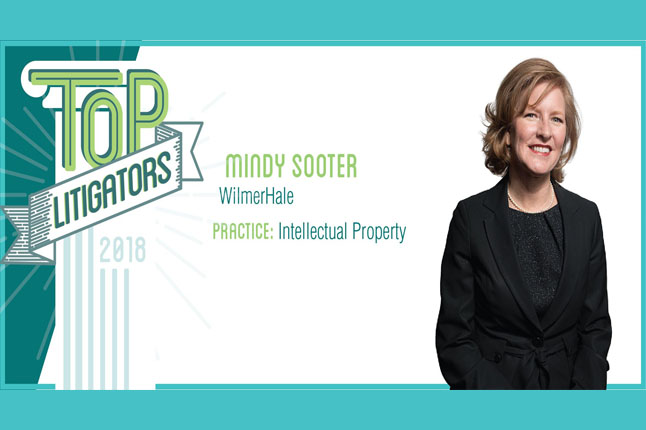
WilmerHale’s Mindy Sooter understands when one of her intellectual property cases goes to court, even if she feels her side has the stronger argument, it still has to feel fair in order to win. And to help a judge or jury make the right decision, Sooter has to make sure she doesn’t drown them with so much complex, technical information that they can’t understand the heart of the case. Simplifying it down to its most understandable elements is one of the toughest yet also most important parts of litigating an intellectual property case.
Sooter had the chance to show her skills of finesse last year in a litigation victory representing Comcast against OpenTV and Nagravision for claims of patent infringement. Comcast sought a declaratory judgment in the Northern District of California that the company did not infringe on 10 patents held by the defendants.
Because of the difficulty of litigating 10 patents in a single trial, Judge William Alsup implemented a streamlined process called a “shootout.” He had each party choose its strongest claim to try on an accelerated timeline. OpenTV ultimately dropped the claim Comcast asserted as the most frivolous, and a claim of infringement on a patent for the number of input ports in a set-top box proceeded.
“The judge’s strategy was to narrow down the case and to really sink his teeth into a tangible issue to see who he thought was right and who he thought was wrong,” Sooter said.
Although the judge scheduled a jury trial in case he could not decide the case’s questions of law himself, he ultimately granted summary judgment in Comcast’s favor. He also invited them to file a motion to attorney’s fees. Sooter estimated the whole process took about seven months.
She explained she and her team had to consider the ease of the judge understanding each patent, rather than only complex technical arguments favored by engineers and expert witnesses.
“One of the challenges and one of the things that I love about patent litigation is the challenge of bringing very deep, complex technical issues to a level that anybody in your household can understand,” she said. She explained the claim over the set-top box’s design worked well for litigation because the devices are so common that she could explain why Comcast had not infringed the patent in a way easily understandable to the judge.
“It’s one thing to read a patent and to see what it says and to learn the technology and to get down deep with the engineers, which I love doing,” she said. But distilling cases’ most important issues into digestible information that jury members can understand but does not insult their intelligence is a difficult and delicate balance in intellectual property litigation, Sooter added.
She said that although the issues are complex, jury members will still have the ability to comprehend them if they’re explained well. “I think one of the worst things you could do is be condescending to a jury,” she said.
Sooter also represents Medtronic as the company’s lead counsel in litigation matters. The challenge of helping a judge and jury understand complex intellectual property issues amplified in a recent case over a breach of contract for a patent license that was litigated in state court and spanned multiple jurisdictions.
“That’s an example where you have a court [that’s] not familiar with patents or patent issues at all,” she said, because intellectual property is a matter of federal law. “So that’s one example where you have an entirely different audience. You have a judge who’s new to the legal issues that are in front of him. So then you have to start with the basics in the law.”
Sooter has an engineering background, which she said she believes both helps her know what questions to ask in a case and gives her a “B.S.” detector for opposing sides’ arguments. But Sooter acknowledged the challenge of switching off that side of herself when she talks to a jury.
“It’s part mentorship and part experience in both real trials and mock jury trials,” she said of learning how to take herself out of the rabbit hole of complex technical concepts. Sooter added that a jury will end up with only a handful of takeaways at the end of a trial, so too many technological nuances in a case will likely get lost, even if they seem important to the attorneys or experts.
“So you have to pick what you’re going to prove, and then prove it in a way that will resonate with the jury and they’ll actually talk about and remember when they’re deliberating,” she said. She jokingly added her teenage children can make a good litmus test for checking whether her arguments in a case have gotten too into the weeds.
“In litigation, you constantly have to be bouncing back and forth between the forest and the trees,” Sooter said. “You constantly have to be looking at the forest. How is this judge going to be viewing this case? … And how can I help him understand why he should rule in our favor?”
— Julia Cardi

